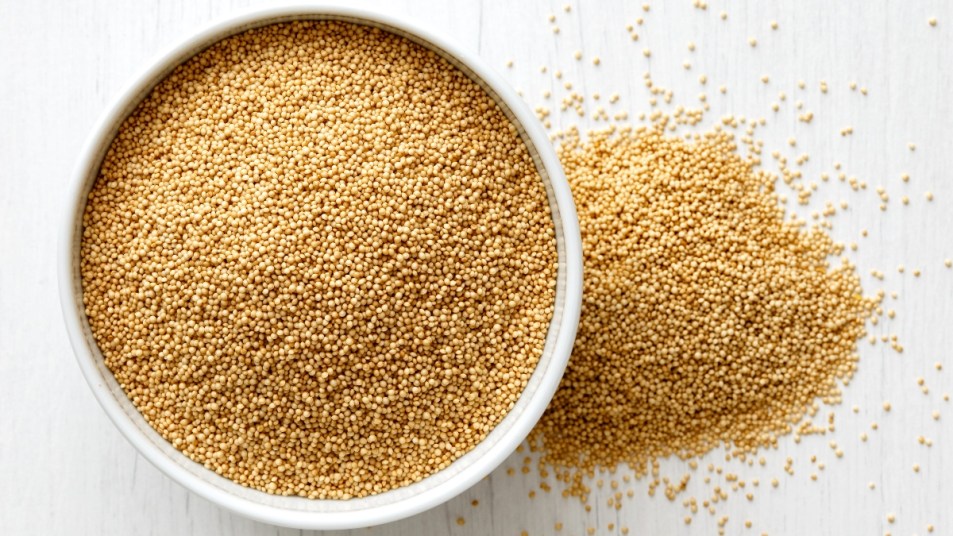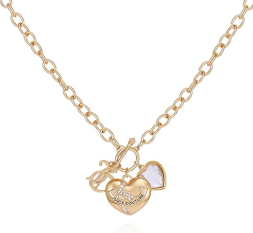Amaranth: The Underrated, High-Protein Grain That Can Help You Fight Inflammation
The Aztecs called this delicious grain the “food of immortality.”

Looking to mix up your grain game? Popular options like quinoa, buckwheat, oats, and millet are excellent choices, but without amaranth, you’re missing out on a superb addition to your meals.
You may not be familiar with this grain, but it dates back thousands of years in the human diet. According to the Whole Grains Council, Aztecs referred to amaranth as the “food of immortality.” Its peppery yet “pleasantly sweet” flavor along with a grassy aroma means that you can use it in both dinner and dessert. That might sound strange at first (isn’t it savory, like quinoa?), but many pastry chefs use this grain to whip up amaranth pudding, which is made with either vanilla, raisins, and coconut or chocolate and various nuts. Read on to learn more about this impressive whole food.
Where Amaranth Grows
The Whole Grains Council says amaranth seeds were originally found in Argentina before humans moved them north through Mexico and then through Europe and Asia. Today, this grain can be found all over the world — even in your own backyard, if you get your hands on some seeds. The council adds that the plant can “adapt to a wide range of growing conditions and do well in a variety of elevations.” Bonus: The vibrant magenta blooms add some beautiful color to your garden before they start to brown and it’s time to harvest.
Nutrition Facts of Amaranth
Here’s a simple breakdown of notable macro and micronutrients packed into one cup of cooked amaranth:
- 251 calories
- 46 grams carbohydrates
- 5.17 grams fiber
- 9.35 grams protein
- 116 milligrams calcium (9.67 percent daily value, or DV)
- 54.1 micrograms folate, or vitamin B9 (13.53% DV)
- 5.17 milligrams iron (28.72% DV)
- 160 milligrams magnesium (50% DV)
- 332 milligrams potassium (12.77% DV)
- 13.5 micrograms selenium (24.55% DV)
Don’t be scared of the carbs in amaranth — the amount is similar to or less than other whole grains. Amaranth also contains more protein per cup than other grains. Check out the carb and protein stats of other grains below (all cooked):
- Buckwheat groats: 155 calories, 33.4 grams carbohydrates, 5.68 grams protein
- Oats (old fashioned): 154.7 calories, 26.7 grams carbohydrates, 6.7 grams protein
- Millet: 207 calories, 41.2 grams carbohydrates, 6.11 grams protein
- Quinoa: 222 calories, 39.4 grams carbohydrates, 8.14 grams protein
That impressive amount of protein in amaranth gets even better thanks to it being a complete protein, meaning it includes all nine essential amino acids. (Buckwheat, oats, millet, and quinoa also contain complete protein.) Along with that, the high fiber content makes it a beneficial addition for anyone looking to shed a few pounds thanks to the nutrient’s digestive and gut-healing properties. Plus: It’s gluten-free.
A word of caution: While there isn’t much data available on the glycemic index of amaranth, one study estimates it to be between 87 and 106, which is considered high. As a result, people who are diabetic should try and mix amaranth with foods high in fiber and protein, such as leafy greens and lean meat, to reduce the chance that it causes a blood sugar spike.
Health Benefits of Amaranth
The Whole Grains Council also notes that amaranth contains a peptide called lunasin, which may have anti-inflammatory and anti-cancer effects. A 2014 study published in Molecular Nutrition & Food Research backs up this theory. During this study, researchers discovered that amaranth prevented the activation of NK-kB (a group of genes that trigger inflammatory and immune responses). Although inflammation is our body’s natural response to damaged or harmful cells, anyone with chronic inflammation issues might find some relief by adding amaranth to their regular diet.
An earlier study from 2012 in the Journal of Food Science listed a few more benefits you can likely count on from amaranth that have been observed over the years, including lower cholesterol and blood sugar and improved hypertension. It also boosts the immune system, and can even ward off allergic reactions. (That’s a lot for such a tiny grain.)
How To Cook Amaranth
By now, you’re probably wondering how to cook amaranth. You can use it in the same way you would any other grain. The Whole Grains Counsel recommends combining a cup of the dried grain with two cups of liquid (water or your favorite broth) and letting it boil for about 15 to 20 minutes. When done, the texture should resemble porridge or polenta. Then, toss pretty much anything on top, be it veggies, fish, or chicken. Or use it to create a sweeter treat with ingredients like chocolate and cinnamon. Give it a try the next time you’re in the mood for a grain bowl and enjoy all the scrumptious benefits.













